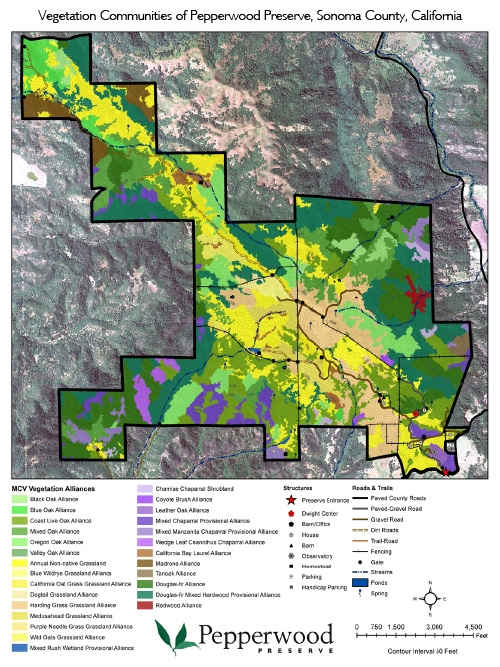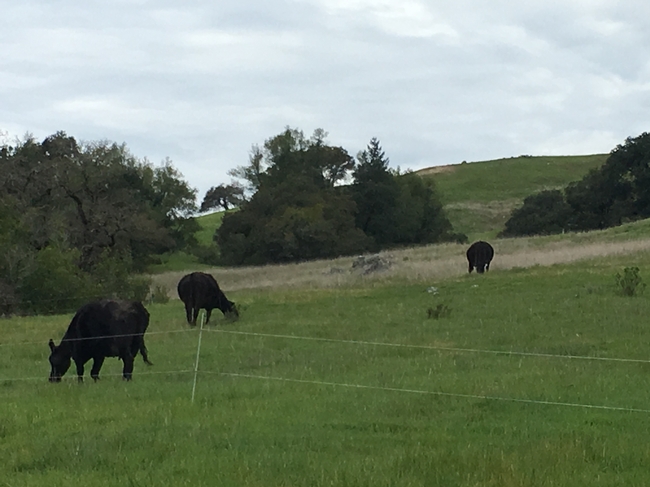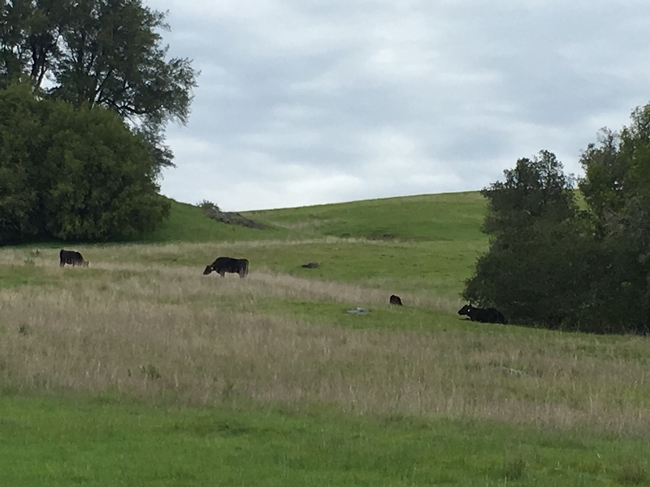

In 2013, Pepperwood initiated a Conservation Grazing Program using electric fencing to control herd density, manage seasonal timing and increase rest periods between animal impact events. Rangeland research and practical experience has demonstrated that animal disturbance can have a positive impact on grasslands and some native fauna if properly managed for conservation goals.
Grazing is a tool many land managers use to create disturbance in grasslands to improve soil health, reduce thatch cover, combat invasive weeds, increase native species diversity and restore historical impacts once created by native fauna.
The use of domestic grazing animals to achieve conservation goals is not new and is sometimes referred to as targeted or prescribed grazing or holistic grazing. Pepperwood prefers the term “conservation grazing” because it speaks directly to the goals of their grazing program.
Cattle managers use electric fencing and portable water systems to maximize the ability to control animal density and duration on varying grassland types and environmental conditions. The Conservation Grazing Program at Pepperwood intends to demonstrate that by using variable density, short duration grazing and adequate periods of recovery, rangeland managers can make progress towards conservation goals.
References available upon request.
Attached Images:

